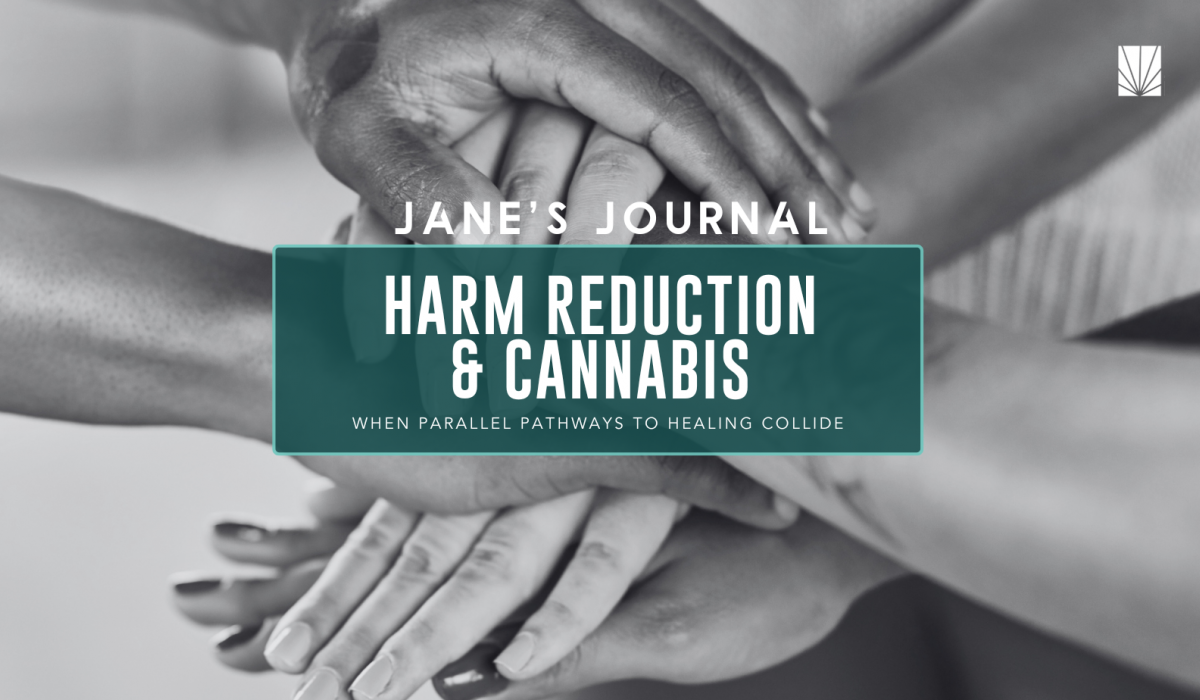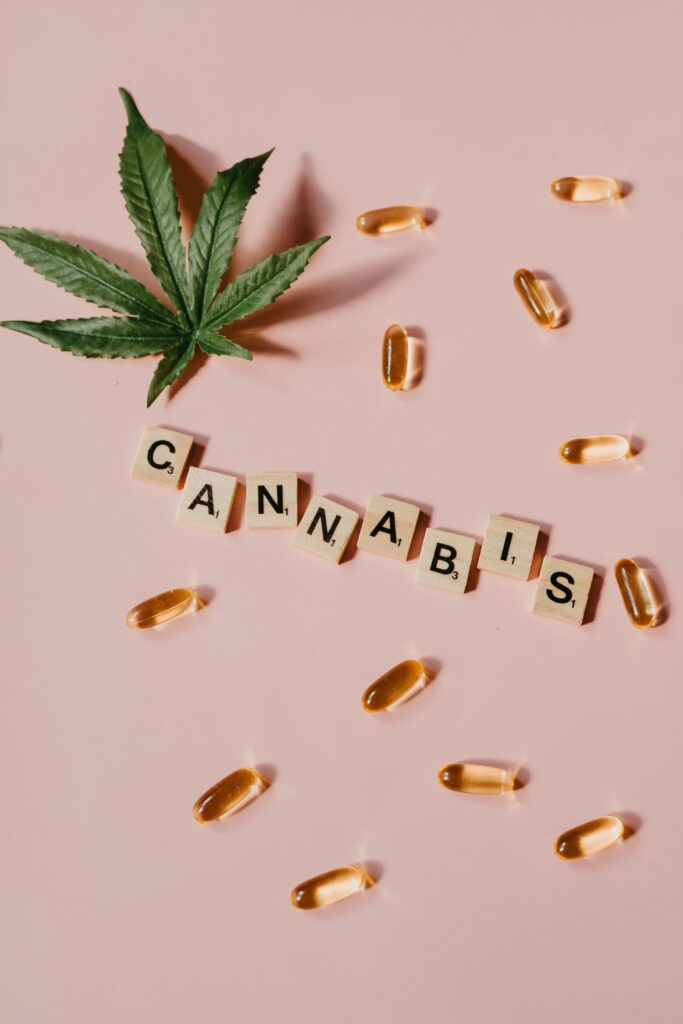
Harm Reduction & Cannabis: When Parallel Pathways To Healing Collide
What happens when public health crises collide? How do we triage overlapping emergencies—especially when they’re exacerbated by systemic injustice? And what should community leaders do to mitigate public harm in the short to mid-term, as they continue working toward longer-term goals? These are all major questions that have inspired the harm reduction movement over the last 65 years.
What Is Harm Reduction?
Harm reduction is, essentially, a set of principles designed to meet people where they are—accepting that abstinence from risky behavior is not a goal or even possible for every person. Most risky behaviors exist on a continuum of more to less harmful for the individual and the communities in which they exist. Harm reduction emphasizes personal sovereignty which is particularly meaningful for minority groups whose self-determination is often limited by deep-rooted systemic inequality.
As the Substance Abuse and Mental Health Services Administration (SAMHSA) puts it, “persons who have a history of familial, community or racial trauma may be particularly in need of compassionate services to support their pathways to improved health outcomes.”
A respite amidst the cultural narratives created by the War on Drugs, harm reduction is a survivor-centered movement committed to deep self-determination, community engagement, reparative social justice, accessibility and noncoercive support.
What Are Harm Reduction Practices?
From a harm reduction standpoint, the goal is not to eliminate risky behaviors entirely but to emphasize how they can be done in a way that reduces the chance of negative outcomes. Some common examples of harm reduction tactics include safe injection sites, needle exchanges and methadone clinics. But harm reduction can also look like:
- Free breakfasts and lunches for school children
- Condoms at health centers, college campuses and bars
- Seatbelts in cars and helmets for motorcyclists
- Medical cannabis dispensaries and compassion programs
- Harnesses and belay ropes for rock climbers
- DUI laws and probation requirements
- The Third Party Naloxone / Good Samaritan laws for naloxone administration

What these strategies have in common is that they seek to mitigate the harm of common risky behaviors without judgment or shame. Harm reduction principles also acknowledge that individual responsibility can only go so far in the face of long-term systemic issues.
Take prohibition, for example. From January 17, 1920 until December 5, 1933, abstinence became the law of the land as alcohol was federally banned in the United States. After prohibition ended, new laws were put into place that required bars, restaurants and nightclubs that serve alcohol to carry liquor licenses.
Some states known as Alcohol Control States have a monopoly on wholesale liquor distribution and retail. Other states require establishments that serve alcohol to be individually licensed to dispense and sell alcoholic drinks. Minors are carded before making purchases, and may be denied entry to liquor-forward establishments.
All of these laws that we now take for granted are intended, on some level, as harm reduction measures. If people could not be persuaded to abstain through federal prohibition, the states could at least create laws and policies that aim to reduce public harm caused by an unchecked drinking culture.
Following the invention of the automobile, a slew of laws, regulations and even the Department of Motor Vehicles emerged in an effort to help make a dangerous new addition to cities safer for drivers, passengers and pedestrians alike. And, when cannabis was first legalized state by state, the regulatory models were based on those for alcohol—which is why you can only purchase limited amounts of cannabis from licensed dispensaries each time you visit.
How Harm Reduction Emerged From the HIV/AIDS Crisis
These are all fairly conservative, mainstream and accepted examples of harm reduction that first emerged from grassroots campaigns established to fight broader systemic issues like the advancement of Civil Rights, gender equality or disability justice. Harm reduction, however, has sometimes been cast in a more controversial light because of the areas of public health these principles are primarily applied to.
In the 1980s, HIV and AIDS not only affected the queer community, but also drug users who shared needles. Fueled by homophobia, the Regan administration’s response to the AIDS epidemic was slow and lackluster. Similarly, the medical establishment and federal government also displayed a certain level of indifference to people who inject drugs. In a culture that equates addiction with moral failure, substance use remains highly stigmatized.
Yet harm reduction practices designed to reduce the spread of AIDS soon emerged. It was acknowledged that many people who use injectable substances are at a higher risk for contracting HIV and that abstinence from highly addictive substances was not a realistic or practical solution. Instead, harm reduction prioritized tools like syringe services, safe injection sites and methadone/ buprenorphine clinics which served to reduce the potential harms of drug consumption and help people slowly change and reduce their usage patterns.
Harm Reduction and Medical Cannabis

At the same time that harm reduction practices were emerging to address the impact the HIV/AIDs crisis was having on drug users, the medical cannabis movement was working to address the devastating impact of the epidemic on the queer community. Buyers clubs and compassion programs emerged to improve cannabis accessibility for HIV/AIDS patients in order to help mitigate symptoms and provide palliative care to the dying.
By 1996, the medical cannabis movement successfully advocated for cannabis legalization in California and Oregon. This ushered in a new era of scientific research into other medical applications for cannabis—including its potential as an addiction recovery tool. For anyone who grew up during the War on Drugs , this was an interesting development that countered the “just say no” messaging around drugs.
For decades, the narrative was that cannabis was a “gateway drug” leading users to a taste for harder substances like heroin. Now some studies suggest cannabis may be a powerful tool for opioid recovery treatment. And others even provide evidence that cannabis can be a valuable substitute for opioids in pain management use cases.
That’s where cannabis and harm reduction’s parallel journeys intersect. Cannabis is no longer considered one of many hard drugs from which abstinence is considered responsible and even morally necessary. In many circles, it’s now considered medicine or at the very least a harm-reduction tool one can use to manage pain and withdrawal symptoms without turning to more addictive pharmaceuticals like opioids.
Harm Reduction and the Work of This Is Jane Project
At This Is Jane Project, our work is based on harm reduction principles not only as we connect women and nonbinary trauma survivors with donated plant medicine, but also in our belief that this plant can support our bodily and mental sovereignty—particularly for marginalized communities.
Harm reduction recognizes that stigma is a major component of negative health outcomes for people who participate in behaviors like sex beyond heterosexual and cisgender norms, or the use of injectable drugs. That stigma is often compounded for BIPOC, LGBQIA+, trans and nonbinary people, and other intersectional identities who are disproportionately impacted by systemic injustice.
Harm reduction also recognizes the imperfect realities of living with PTSD and other mental health conditions that may be managed and improved—but not necessarily cured. PTSD and trauma itself can be expressed through a person’s relationship to risk as well as substance use. Harm reduction acknowledges that healing takes time and looks different when tracked over months or years of a person’s life.
For a myriad of reasons, cannabis has become a cornerstone of a harm reduction approach to managing trauma, chronic disease and mitigating the negative outcomes of drug use. This Is Jane Project is committed not only to connecting people in need with access points to cannabis, but also to combating the stigma around consumption so that more people might explore the therapeutic benefits of the plant.
cannabis movement, community care, community health, harm reduction, harm reduction practices, harm reduction principles, medicinal cannabis
